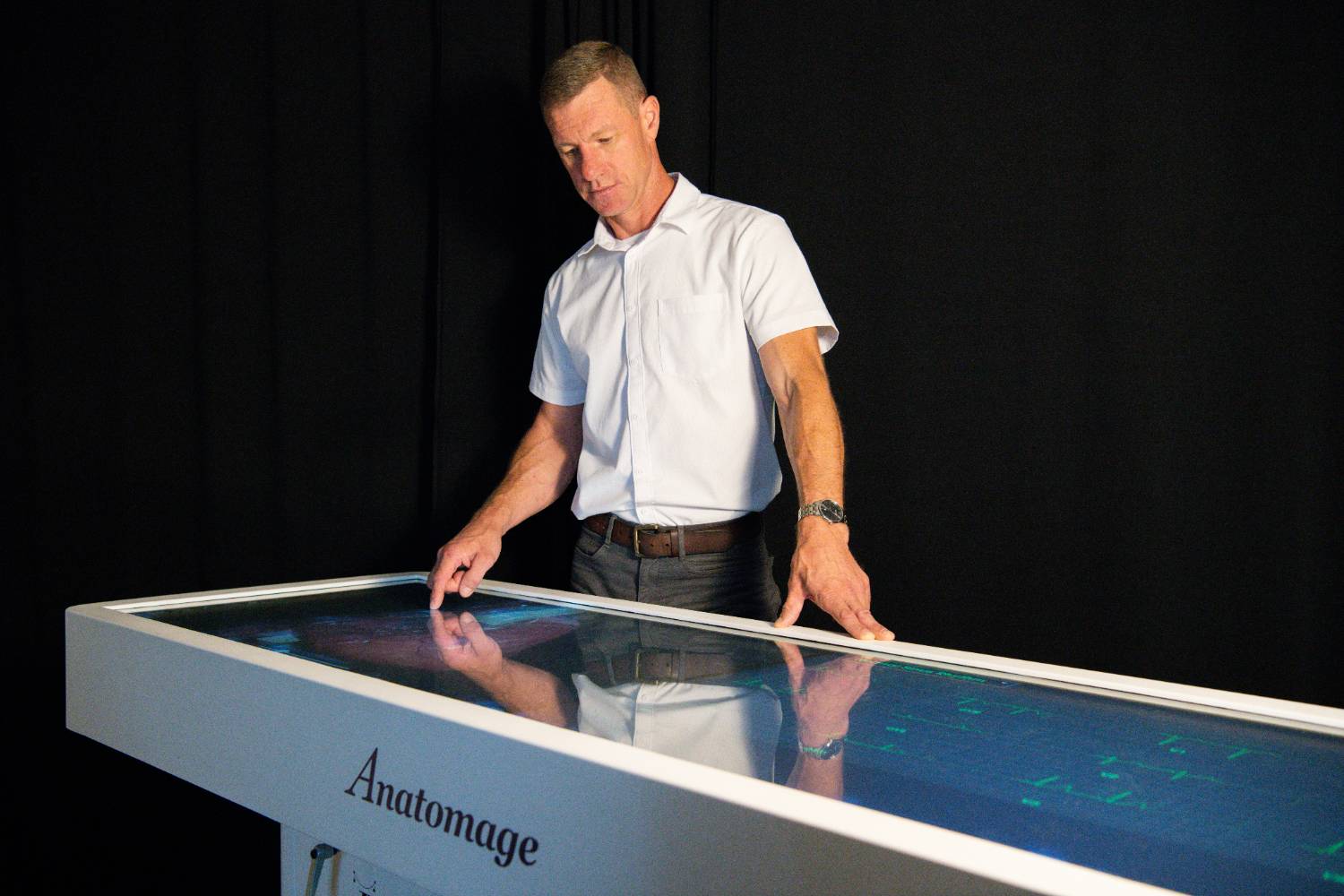Long before DMACC first rolled an Anatomage table into the health sciences labs across its campuses, Joel Otte got curious about the high-tech, 3D anatomy visualization and virtual dissection tool. Really curious.
Joel, DMACC’s EMS and Fire Science Education Coordinator, didn’t wait for a user manual or training guide. He requested his own CT scans from a past musculoskeletal injury and took them to Drake University to test out the equipment, just to see how the technology worked.
When the tables finally arrived at DMACC in March 2024, Joel was ready. He uploaded those scans into the system and spent hours in the dim, stuffy (and slightly warm, thanks to the tables emitting heat) lab room on Ankeny Campus — pushing the boundaries of what the technology could do.
“Initially, we weren't sure how external scans would work with the tables,” Joel recalls. “But once I got my own scan loaded, there I was – digitally laid out in 3D. When students realized, ‘Whoa, that's you in there,’ it made anatomy much more tangible and engaging.”
The Anatomage Table, used in DMACC’s Health Sciences and Public Health & Community Services Pathways (particularly for the Paramedic, EMT, and Nursing programs) comes preloaded with digitized full-body cadaver scans from people who donated their bodies to science research. But Joel saw it as more than a static learning tool. He saw potential.
“Even our CNA students from the Career Academy have stayed after class for hours, just playing with the technology,” Joel says. “That kind of engagement is what makes learning stick.”
Joel is a former firefighter paramedic with over 16 years of field experience who still works in the field, part-time.
That real-world connection is vital in Iowa, where the shortage of trained emergency responders continues to grow.
“Most of our students come in with zero experience,” Joel says. “But by graduation, many are already hired locally.”
Those employment outcomes are fueled by DMACC’s close ties with local EMS agencies and hospitals, ensuring curriculum, equipment, and instruction stay aligned with real-time industry needs.
Now, Joel is helping take the Anatomage technology to the next level by leading an initiative to build a library of real case studies (with patient information redacted for privacy) in a collaborative partnership with local hospitals such as UnityPoint Health.
Using anonymized CT scans from actual emergency cases, Joel and his team are transforming the tables into immersive diagnostic tools by walking students through the journey from emergency scene to diagnosis.
They're currently working on building out an addition to the curriculum in which each case will be paired with a video interview from the EMS provider who treated the patient, helping students connect the physical trauma they see on the table with the decisions made in the field.
“We’re helping students see how trauma presents in the body — and how to respond with insight and confidence,” Joel explains. “It’s not just about memorizing anatomy. It’s about understanding what’s happening inside the patient and why it matters.”
Joel and his DMACC colleagues are also compiling a catalog of known pathologies that students can interact with on the table — everything from broken bones to pulmonary embolisms. The goal is to make the table a resource for clinical reasoning, not just anatomical review.
The impact hasn’t gone unnoticed. Joel was recently honored by Anamotage with the
Trailblazer Award, a national recognition for educators who are redefining what’s possible in health
science education through innovation and leadership. He was also invited to the company's national conference in San Jose, California in July, 2025, where he led a workshop for educators called
Scene to Scan: Using Anatomage for EMS Education and Reflection.
“We’re not just reacting to workforce shortages,” Joel says. “We’re reimagining how we train the next generation of paramedics and emergency responders.”
Curiosity got him started. Innovation is carrying it forward.
And for Joel Otte, the future of EMS education is already here — lit from within by the soft blue glow of a table, a scan, and a question: What more can we do with this tool?
Bear Trails highlights unique journeys of DMACC students, alumni, faculty, and staff, celebrating their diverse experiences and inspiring paths. Have a story idea? Contact Savannah Eadens, Public Relations & Communications Specialist, at sjeadens@dmacc.edu or 515-675-3275.

